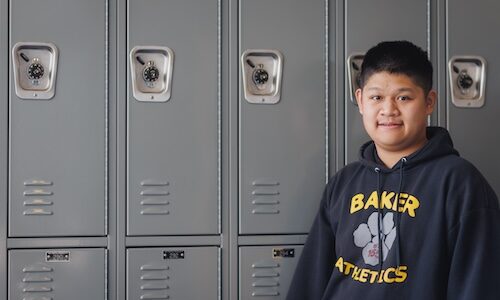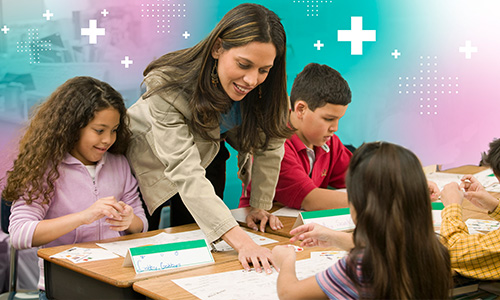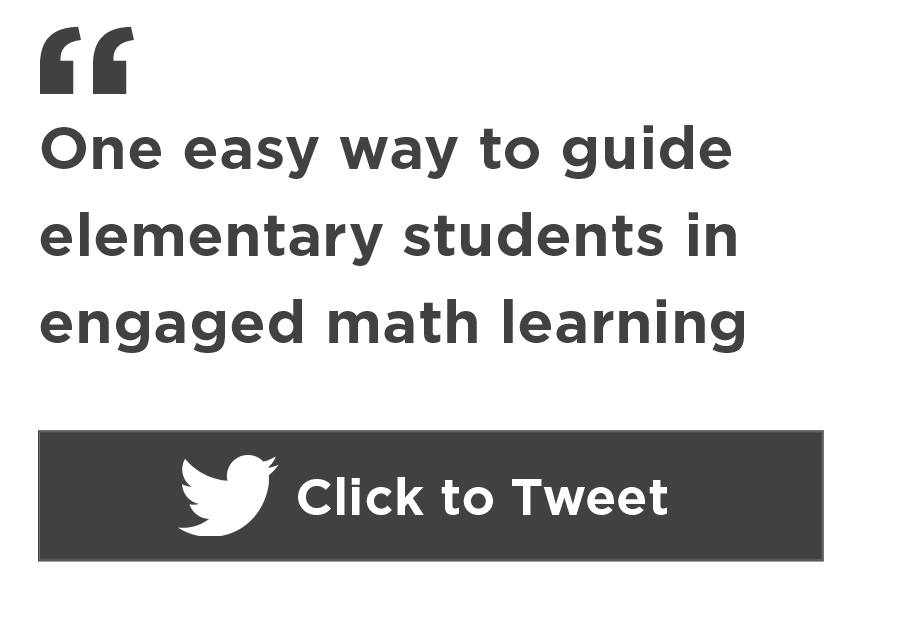
Teaching math can be very challenging. In teacher preparation programs, many of us were taught about the importance of engagement, formative assessment, and adjusting our teaching to ensure all students are benefiting from the daily lessons in class. With so much to cover every day, however, the time crunch can leave us in an unchanging pattern of the “I do, we do, you do” style of teaching. We might venture out a little and use Think-Pair-Share for a change, but with either approach, are we delving deep enough to help our students truly understand the problem-solving aspect math is all about?
One approach to help with the monotony and guide elementary students in engaged math learning—the kind that can help them develop a positive math identity—is BUILD stations. It can come in especially handy at the start of the 2021–22 school year as you work to address the interrupted math learning many students experienced during COVID-19. BUILD is an acronym that stands for the following:
- Buddy games
- Using manipulatives
- Independent work or I am with the teacher
- Learning about numbers
- Doing math
I’ll explore more about what BUILD stations are—and how to use them in your own classroom—later in this post. But first, a bit on how they came to life in my classroom.
BUILD-ing with my fourth-graders
I found BUILD stations to be incredibly valuable in my own classroom as I implemented standards-based teaching in my lessons. I gathered that many of my fourth-grade students were struggling with the basics, and I knew that in order for them to be able to become problem solvers, they needed to have the basics mastered. How could I keep up with the pacing guide enforced by my district, conduct small group reteaching with my students, and give my class a different way to engage with math by working independently and collaboratively?
I quickly started to think about an action plan. I knew I would need data to support my effort, so I triangulated data from MAP® Growth™, pretests, and classroom observations. Then I placed students in five homogeneous groups so I could differentiate instruction more easily. After I had everything planned out, I consulted with my instructional coach. It was then that BUILD stations became a reality for my classroom.
Understanding BUILD
The BUILD station model is not a curriculum; it is a way to manage math centers. As I noted earlier, each letter stands for a different station, and stations run a total of 15 minutes each, Monday through Friday. You choose what activities or assignments your students complete at each station, and your class runs on a specific BUILD configuration for 10 school days. This ensures each group can visit each station twice.
The BUILD station model is not a curriculum; it is a way to manage math centers.
BUILD stations are an effective way to allow teachers to provide small-group instruction to support students’ needs following a whole-class lesson, and they provide students with a significant and purposeful approach to practice and review various math skills in a fun way. Students often realize that they have another chance to ask questions, review, or confirm their learning during this time, so BUILD relieves them of the overwhelming feelings many have when engaging in mathematical learning. It pushes them to develop skills outside of math, too, by calling on them to read and follow directions, stick to the rules of a game, manage materials, and work collaboratively in the allotted time for each station. Talk about practicing executive functioning skills!
Stations are meant to provide meaningful, independent practice based on your standards, curriculum objectives, and students’ needs. They should include a variety of activities differentiated to meet the needs of your students, change regularly according to their needs, hold kids accountable for the work in which they are engaged, and allow you to assess your learners’ math skills, strategies, and understandings.
Teachers and students have specific roles while working in BUILD stations. Teachers can work with students individually or in small, flexible groups. They can also collect formative data and make anecdotal notes through observation. I often took this time as an opportunity to reteach a lesson if students had misconceptions or absences, and I would circulate the room to make sure students stayed on track. Students, meanwhile, are engaged in the practice and application of math skills and strategies you taught them during a whole-class lesson. They are working in their groups and holding one another accountable.
My best practices
When I first brought BUILD stations into my classroom, I needed to develop routines to make each math station operate well. I began by creating rules with my students on an anchor chart, so that we were all in agreement about what should happen at each station. We left them displayed in the classroom as a reminder, and role playing the dos and the don’ts was beneficial as well. Here’s an example of the expectations from one of my fourth-grade classes:
- Everyone listens.
- Everyone has a right and responsibility to contribute.
- Everyone speaks clearly enough for all to hear.
- Everyone respects each other.
- Everyone builds on each other’s ideas.
I also used a daily rotational system to schedule my students at their stations. Each station was 15 minutes long, and they ended at minute 12 to give students time to clean up and get back to their seats. It was always fun to make cleanup time a competition.
Finally, I implemented BUILD stations early in the school year and kept them very simple at first. I focused on having students get used to the routine so the groups could operate more independently and smoothly as the year progressed. (Grouping can be heterogeneous during this time because the goal is to help students establish routines.) Once we were all familiar with how BUILD works—and once I had some data points from my first MAP Growth administration and other assessments—I would transfer my role from manager of the BUILD to head of a teacher-led station designed to help students needing additional support or enrichment (the I for Independent work or I am with the teacher). I never made stations too elaborate. Often I simply used a set of directions with task cards or manipulatives needed to tackle a problem or skill.
I found open-ended activities to be most effective since students were able to extend themselves as far as they felt able. The most effective stations almost always included partner and/or group work. I let students complete tasks at a table, at their desks, or on the floor. My students mostly enjoyed working on the floor!
An example
Here is an example of a BUILD station I designed for my students.

Here’s an example of how each group made its way through each station over the course of a week. We would follow the exact same rotation on the second week so that each group would have a chance to visit each station twice.

On day 11, designated for student reflection, we would use an anchor chart to brainstorm some questions. Here are some examples:
- What was your favorite station? Explain why.
- Did you learn something new or interesting? Say what it is.
- Do have questions about any of the activities?
I would also use this day to give myself some extra time to set up the next set of stations.
Helpful resources
Ready to get to work creating your own BUILD stations? There are a plethora of places to look to for inspiration, but here are some of my favorites:
- “Building conceptual understanding and fluency through games” from Public Schools of North Carolina
- “Board games for kids that teach important math skills” by Discover Explore Learn
- Your school’s curriculum (chances are there are already math activities embedded in it)
- For your independent work station in particular, online content providers that use MAP Growth data to build personalized learning paths, including MAP® Accelerator™, our collaboration with Khan Academy








